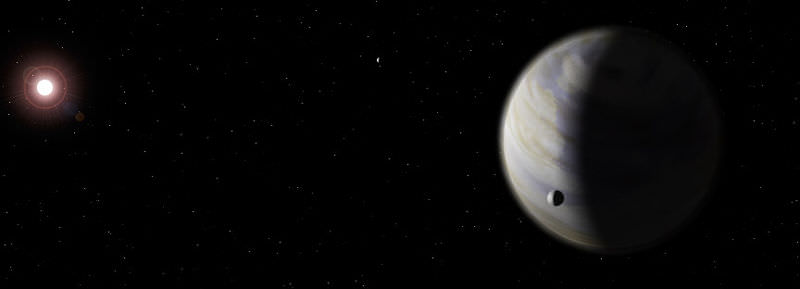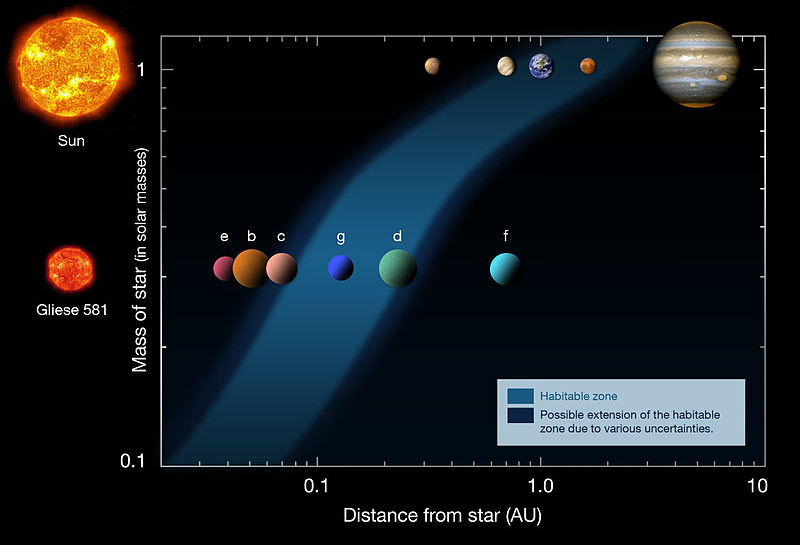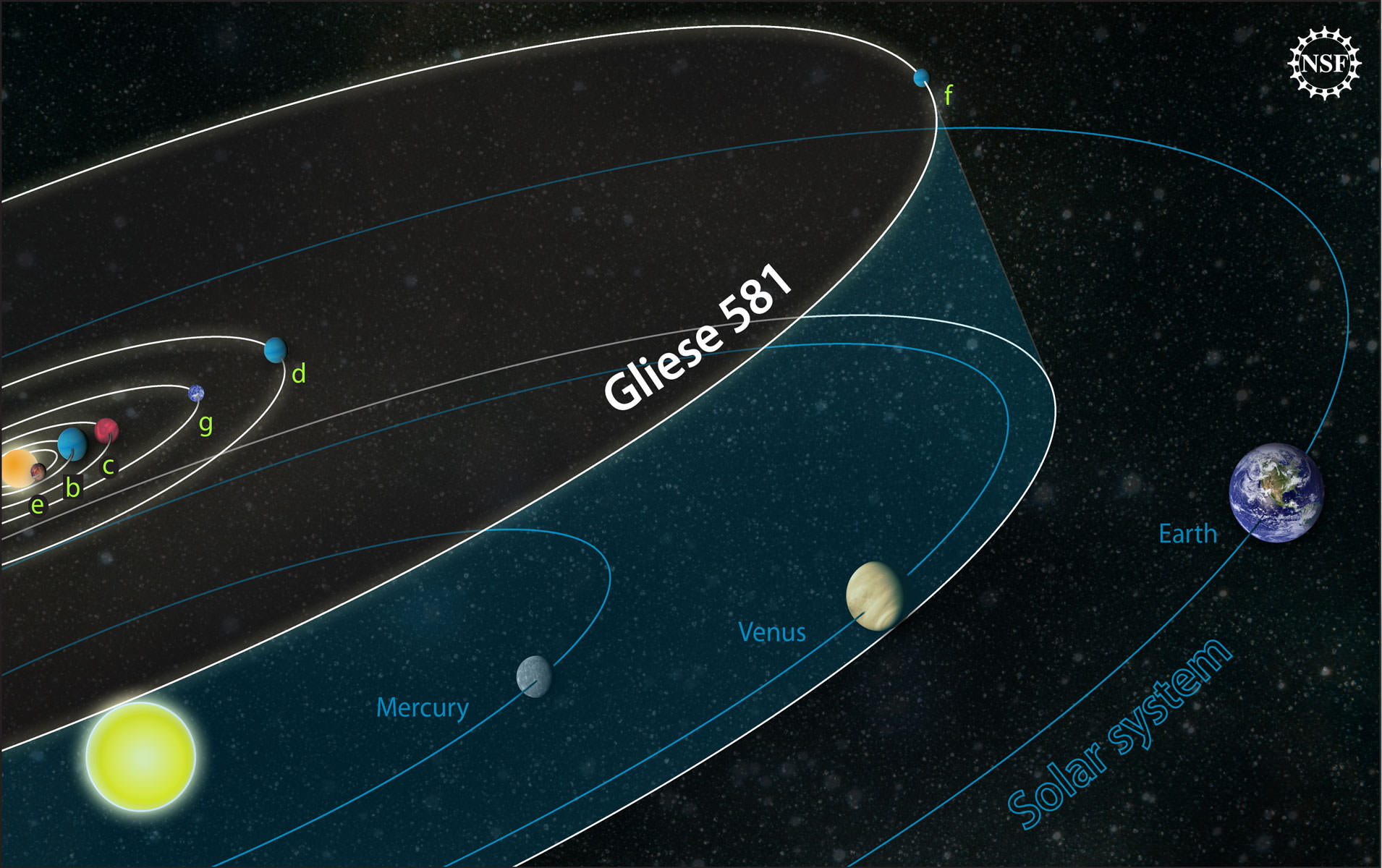[/caption]
The first targeted SETI search of a system with a potentially habitable world has come up empty, but perhaps finding signals wasn’t the main objective in this search. Back in 2007 a group of astronomers used the Australian Long Baseline Array to listen for radio signals from Gliese 581, a red dwarf star that is now known to host at least six planets, with one in the star’s habitable zone. This was a SETI-type search for extraterrestrial-made signals, and it initially found 222 candidate signals. However, the team was able to reject all of them using automated analysis techniques, determining they were caused by Earth orbiting satellites. So why is this potentially good news?
This search was actually a proof of concept for using the Very Long Baseline Interferometry (VLBI) for targeted SETI searches, and that it worked well is great news for future searches that look specifically at a particular star system. Until recently most SETI searches were wide sky surveys, scanning wide, random areas of space looking for radio signals. But now, with the success of the exoplanet hunting Kepler mission, we now know of some potentially habitable systems and planets, and astronomers can do targeted searches, looking at specific spots in the sky.
It wasn’t known if the VLBI technique would be successful for such a “directed” targeted search, but this search by Hayden Rampadarath and team from the International Centre for Radio Astronomy Research at Curtin University in Australia proves it does.
The Australian Long Baseline Array is a combination of three radio antennae: the 22-meter Mopra Telescope, Parkes Observatory and the Australia Telescope Compact Array (ATCA) which are each a few hundred kilometers apart from each other. The data from the three locations are combined, making them act as one huge radio telescope, with an extraordinary angular resolution in the milli-arcsecond regime, the highest resolution in astronomy. And it turns out that VLBI techniques are great for SETI searches because they automatically exclude many Earth-based sources of interference that might otherwise look like SETI signals. That’s because the same signals have to show up at all the telescopes several hundred kilometers apart.
The team pointed the telescopes at Gliese 581 (Gl581), located 20 light-years distant in the constellation Libra for about 8 hours, tuning into frequencies close to 1500 megahertz.
The team said that the array would have been able to pick up a broadcast with a power output of at least 7 megaWatts per hertz, which means that if Gliese inhabitants had been broadcasting directly to Earth using an 300-meter Arecibo-style dish, the signals would have easily been picked up. However, ordinary radio transmissions, such as the ones Earthlings regularly transmit into space, would have been too weak to be detected.
But this bodes well for using other more powerful VLBI arrays such as the European VLBI Network, current most-sensitive VLBI array in the world or the upcoming Square Kilometre Array, which will have the sensitivity to pick up broadcasts of a few kilowatts per Hertz from 20 light years away.
So while this doesn’t mean that there is no life in the Gliese 581 system, this does mean we now have an expanded arsenal of tools for looking.
Source: Technology Review Blog



